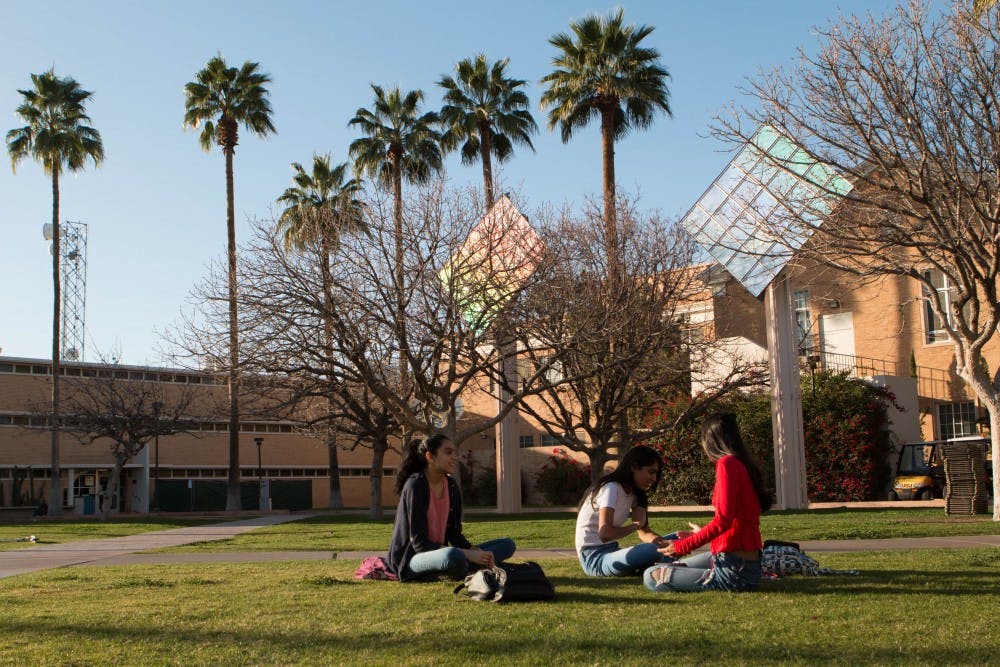An initiative that may make it onto the ballot next fall titled Clean Energy for a Healthy Arizona calls for Arizona to be at least 50 precent dependent on renewable energy by 2030. But one ASU physics professor believes the initiative is a "scam."
The renewable energy initiative, led by NextGen America with backing from billionaire Tom Steyer, is gathering petitions to be put on the ballot. According to the initative, Arizona is now 15 percent reliant on clean energy.
Peter Rez, a physics professor who's written a book on the physics of energy use, claims the proposal is not all that it seems.
"The problem with renewables is that they don't necessarily generate electricity when people want it," Rez said. "Either one has to have massive amounts of storage or to be backed up by fast-response gas turbines."
Rez said solar very rarely can be used as a source by itself if the goal is to reduce carbon dioxide emissions. So an initiative to require renewable usage in the state would still be at least partly dependent on nonrenewable energy, he said. Running a turbine off natural gas would be more efficient, and the state could still choose to use the turbine over renewable sources even if this proposal passes, he said.
"So summing it up, this initiative is a scam," Rez said.
But Pita Juarez, the communications director for Clean Energy for a Healthy Arizona, said this bill is long overdue and Arizonans need to start holding utility companies accountable.
"It’s our responsibility to protect our air, water, and land," Juarez said. "Requiring our utility companies to stop relying on dirty fossil fuels will reduce asthma, heart disease, lung disease and even cancer, especially in children and seniors. Arizona has about 300 sunny days a year — that's unlimited potential."
Wesley Herche, an associate director of research with the Global Security Initiative at ASU who specializes in solar research, said he believes the initiative is "ambitious but doable," and would benefit Arizona.
"The price of solar has been declining exponentially since 1976," Herche said. "The exponential rate is still increasing, so it's still getting cheaper faster. That's true for wind and battery storage as well."
Herche said ASU is already ahead of the state in terms of shifting to renewable energy.
"ASU has built a considerable amount of solar on campus and through power purchase agreements for off-site solar fields that ASU uses electricity from," Herche said. "We have one of the most robust renewable energy generation platforms for any university in the country."
Herche shares Rez's concern about the proposed bill but said Arizona is prepared to make the shift to renewable resources.
"The transition to renewables is key. However, we aren't talking about current battery storage, we're talking about what we can build," Herche said.
Heather Ross is a senior sustainability scientist in the Global Institute of Sustainability at ASU. She agrees with Herche in that Arizona needs to shift to renewable energy.
"The Clean Energy for a Healthy Arizona proposal establishes Arizona’s commitment to the future by setting standards for health, safety, and economic development that focus on the smart, modern century technologies, rather than relying on our best technologies from the 19th century," Ross said.
Ross stressed how important renewable resources are to the growing job market in Arizona.
"The renewable energy industry already generates more jobs, provides more opportunities for regional economic growth," Ross said. "The Clean Energy for a Healthy Arizona targets by 2030 will not only promote healthy outcomes for Arizonans, but also healthy cost savings for consumers and healthy economic development statewide by positioning Arizona as a leader in the energy market."
Herche said Arizona can model its climate plan around the recent power agreement in Tucson.
"We can look at Tucson and look at their most recent power purchase agreement which to my knowledge is under 5 cents per kilowatt hour, solar plus storage," Herche said. "That also accounts for the builder making money. Compared to wholesale, this isn't a bad price. The market is there to facilitate it."
Herche said Arizona is already behind the rest of the country when it comes to renewable resources and needs to catch up to ensure climate stability going forward.
That said, Arizona is third nationwide in solar employment, according to the Solar Energy Industries Association as of 2014. But Herche said Arizona should still be doing better.
"We need to do this for climate security and breathable air. It also builds and keeps jobs in Arizona. We also have to do this because the market dictates we have to," Herche said. "Why should Arizona be left behind in a revolution that's already happening?"
Reach the reporter at rdhood@asu.edu or follow @rhoodofficial on Twitter.
Like State Press on Facebook and follow @statepress on Twitter.




